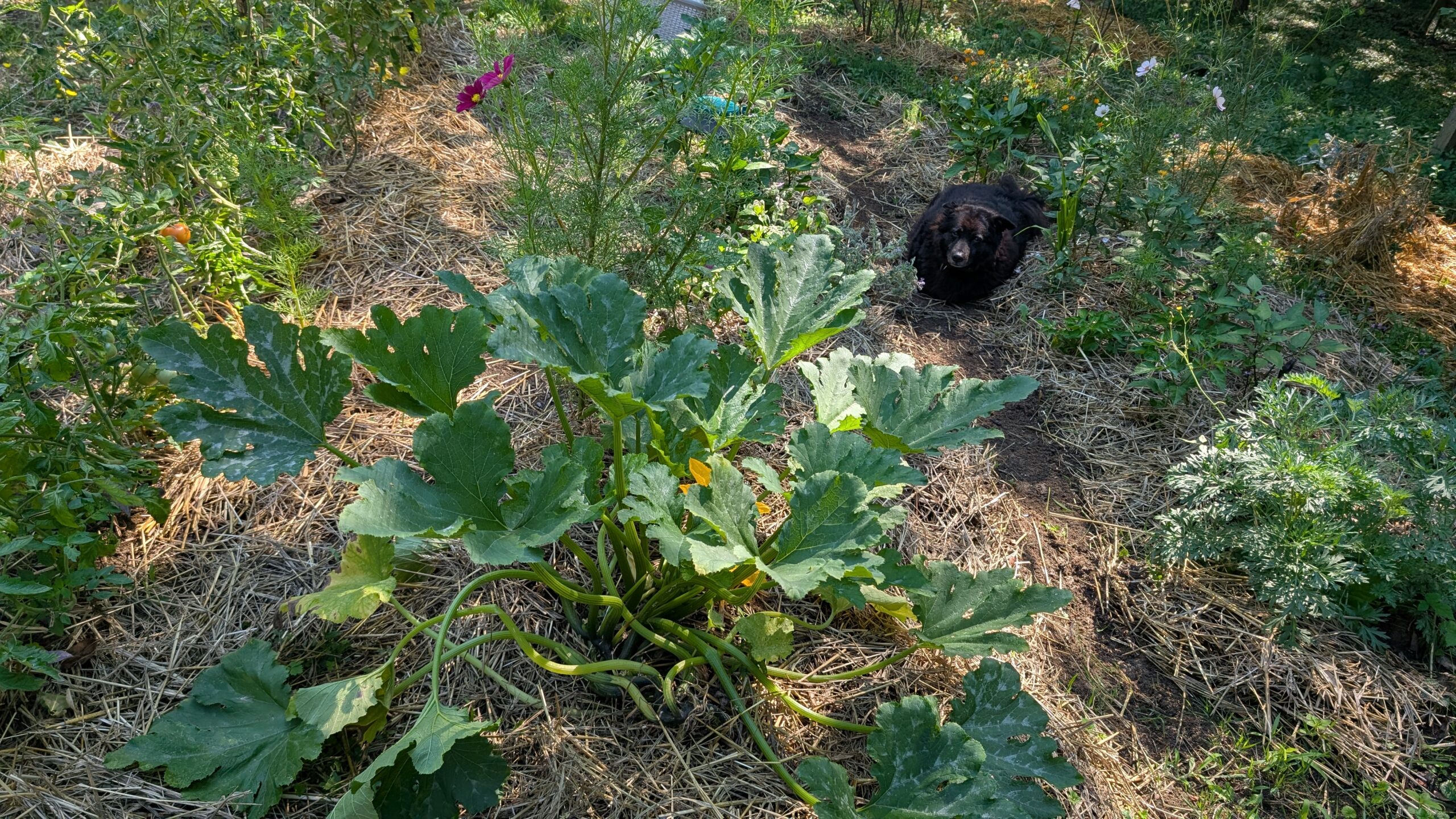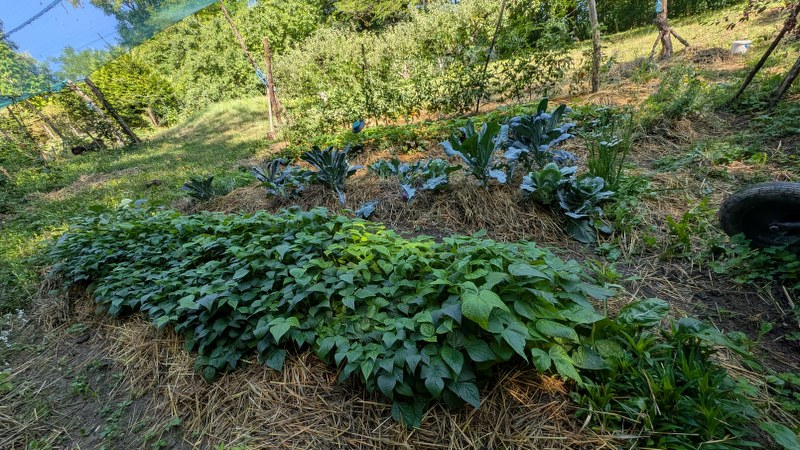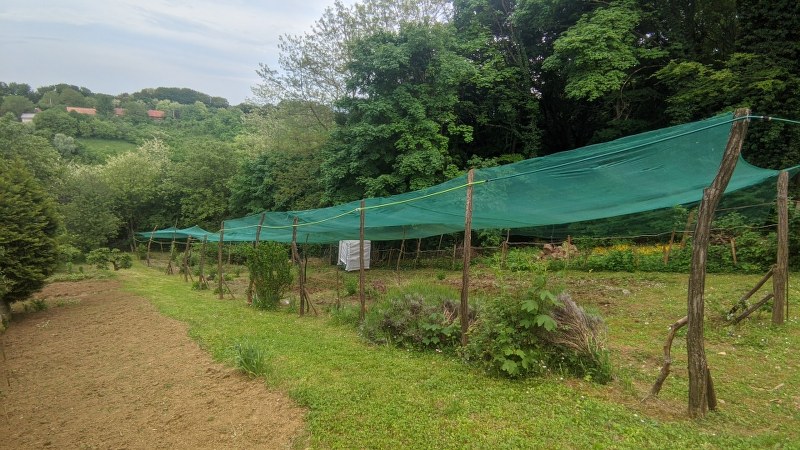August is the time when we start our pickling season. We store our harvested veggies and when the garden numbers are too small, we buy fresh vegetables from the local family farms. Vegetables are now at their peak, and the prices are reasonably low. The bad spring and dry summer raised the prices of vegetables in Croatia by almost 50%, but still, they are cheaper than buying already made jars. That’s why I used the opportunity while there’s not much work in the garden to do some pickling and bought my vegetables. I’ve bought 75 kilos (165 lbs) of different veggies.
The problem is that I don’t have the room to store all the veggies with the heat we’ve been having. Usually, I store them in the basement and make one vegetable variety a day. Now with the heat, the basement temperature is around 30°C (86°F), and that’s no place to store fresh vegetables, so I have to cook all of them as fast as I can. I’ve taken all of the vegetables to the house, which is airconditioned. This was the only solution, considering that the temperature last few days has been over 37°C (98.6°F), and the past 3 days I haven’t really left my kitchen, I’ve been up since 4:30 every day peeling, grating, and filling jars for winter storing.
The first thing I made was my pickled beet since it’s one of the messiest pickling veggies.
Grated pickled beets
Most of the recipes for pickled beets are very similar with the main difference in chunk sizes that are placed in the jar. Some grate it, while others cut to dices. I’ve tried most of the shapes and forms and came to the conclusion that the cucumber slicer is the best option for my beets. I grate my beets with a cucumber slicer after they have been cooked, left for 24h to cool down, and peeled.
Leaving the beets in a sealed pot to cool down makes them easy to peel, and this is a huge help for me since I always do large amounts at once.
As I said beets are one of the messiest fruit to store. The only two things messier are blackberries and quinces. That’s why I always peel and cut my beets outside. Usually, I did it in the yard, but now with the new balcony seedling sunbathing tray, I use the tray for messy cooking. My balcony is right next to the kitchen, so it’s like having a kitchen extension. Before I used to do the beets in the kitchen and the whole kitchen looked like a mass murder scene when I finished. Now I do everything outside and bring the filled jars indoors.
I also wash every pot, pan, and plate right after I’ve finished using it. This way the beets stains don’t have time to fully stick to the dish, and they are easily washed. Sure this means you interrupt your work many times, and by half of the work your hands look like shriveled prunes, but it saves me the cleaning at the end.
 |
| Don’t forget a bowl of water for washing hands |
Cucumber slicer makes thin round slices, so the beets can be easily pushed in the jars, the number of used jars is significantly lower than with dices or bits, and they are a great salad during winter. When I don’t have any vegetables left for Sunday dinner I just empty a whole jar into a glass bowl, add some garlic and olive oil and it looks like I’ve made a fresh beet salad.
The pickling liquid I use is always the same for all of my pickled vegetables. I only change the spices that I add to the mixture.
The mixture contains:
- 0,5 liter of vinegar (16,9 oz)
- 1,5 liters of water (50.7 oz)
- 3 tablespoons of sugar
- 1 tablespoon of salt
I don’t add any extra spices to my beets.
The liquid is cooked until it boils and is poured over the beets in the jars. I seal the jars and leave them to cool down and then I pasteurize them.
Pasteurization can be done in 2 ways. In the oven or on the stove.
Oven:
- place a wet dishtowel on the bottom of the deeper oven tray
- Place the jars on top of the dishtowel
- fill the tray with 2 fingers of water
- place the tray in the oven and heat the oven to 100°C (212°F)
- pasteurize for one hour
- turn off the oven and leave the jars in the oven overnight or take them out and wrap them in blankets and duvets
Stove:
- place the wet dishtowel in the pot
- place the jars on a dishtowel
- add two fingers of water
- bring the water to boil
- lower the range temperature just enough so it would gently boil, but not too much (on the electric range that’s position 3 or 4)
- pasteurize for 30 minutes
- turn off the stove, place the lid on the pot and leave the jars to cool down completely
Beets pasteurized this way can stay on the shelf for years. We usually eat our pickled beets in one season, but I’ve had some 2 or even 3-year-old beet jars that were still perfectly healthy.
 |
| Half of the amount done, other pasteurizing in the oven |
After the beets, I also made some baked pickled peppers, Turšija, Provansal veggies, pickled celery, and carrots, and today I’ll make pickled cucumbers and peppers, which I’ll write about later. I still have to order some peppers for Ajvar and I’ll see if there will be any interesting recipes that I’ll also make if I don’t use all the empty jars before.










Leave a Reply